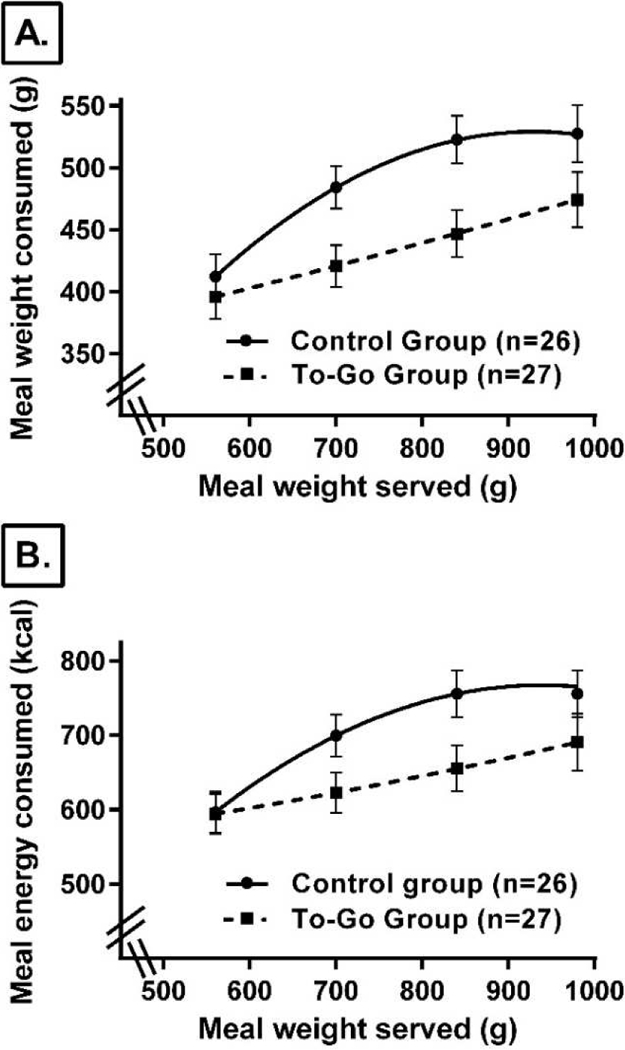Fig. 1:

The effect of increasing the portion size of all foods at the meal on the modeled trajectory of meal intake (the portion size effect) differed by subject group for both (A) the weight of food consumed (P≤0.017) and (B) energy intake (P≤0.025). Means and trajectories from the random coefficients model are shown. For subjects in the Control Group, increasing meal size led to an initial linear increase in the weight and energy consumed at the meal (both P<0.0001) that was modified by a deceleration in intake characterized by a negative quadratic coefficient (both P<0.02). In the To-Go Group, increases in portion size led to linear increases in food and energy intake that were not significantly different from zero (P>0.14).
